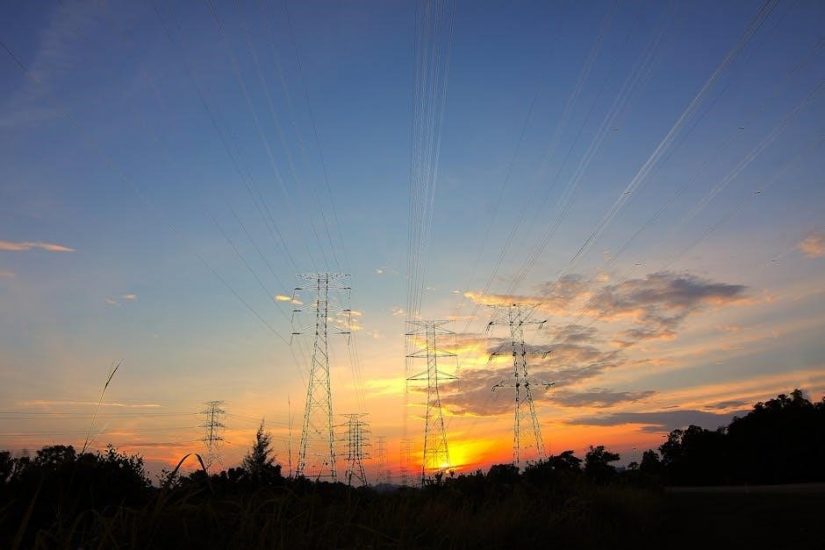A Mitsubishi Triton wiring diagram is a detailed guide illustrating the vehicle’s electrical circuits and connections. Essential for repairs, modifications, and troubleshooting, it ensures safety and accuracy.
1.1 What is a Wiring Diagram and Why is it Important?
A wiring diagram is a visual representation of a vehicle’s electrical system, detailing connections, circuits, and components. It is crucial for understanding how electrical systems function. For Mitsubishi Triton, it provides a clear map of wires, connectors, and devices, essential for troubleshooting, repairs, and modifications. Without a wiring diagram, identifying faults or installing aftermarket accessories becomes challenging and risky. It ensures safety by guiding users to avoid short circuits or electrical damage. Professionals and DIY enthusiasts rely on these diagrams to diagnose issues efficiently. They also help in planning customizations or upgrades, ensuring all modifications align with the vehicle’s electrical architecture. Regularly updated diagrams reflect model-specific changes, making them indispensable for maintaining and enhancing the Mitsubishi Triton’s performance and reliability.
1.2 Brief History of Mitsubishi Triton and Its Electrical Systems
The Mitsubishi Triton, known as the L200 in some markets, has a rich history dating back to 1978. Over the years, it has evolved into a robust pickup truck, with significant advancements in its electrical systems. Early models featured basic wiring configurations, but modern versions incorporate complex electronics, including ECUs, sensors, and advanced diagnostic systems. The introduction of fuel injection, ABS, and traction control in later models necessitated more sophisticated wiring diagrams. These diagrams have become essential for understanding and maintaining the vehicle’s electrical architecture. As technology progressed, Mitsubishi integrated more electronic features, making wiring diagrams indispensable for repairs, upgrades, and troubleshooting. This evolution underscores the importance of accurate and detailed wiring diagrams for the Mitsubishi Triton.

Importance of Wiring Diagrams for Mitsubishi Triton
Wiring diagrams are crucial for understanding and maintaining the Mitsubishi Triton’s electrical systems. They guide repairs, modifications, and troubleshooting, ensuring safety and proper functionality of all components.
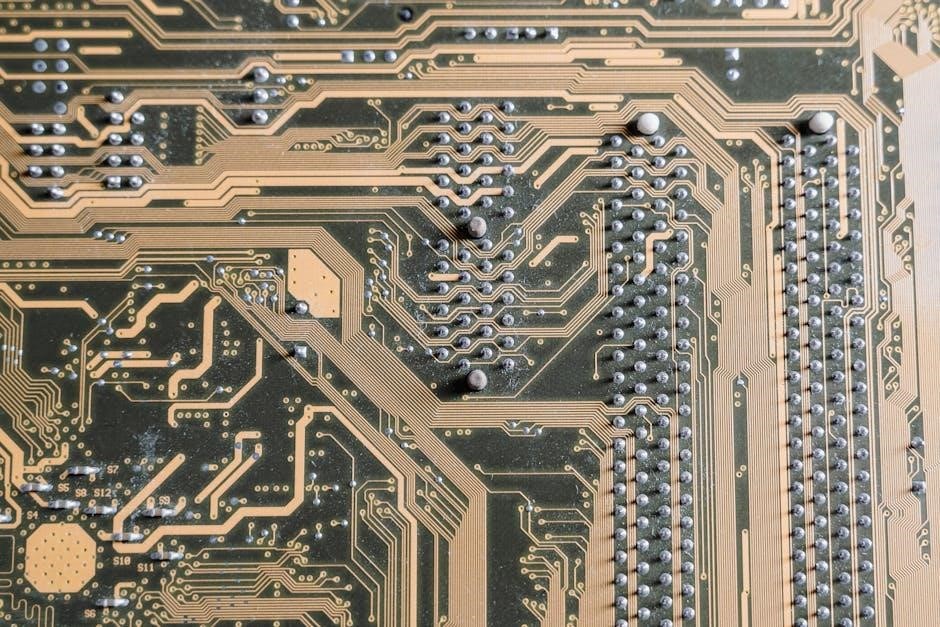
2.1 Safety Precautions When Working with Electrical Systems
When working with the Mitsubishi Triton’s electrical systems, safety is paramount. Always disconnect the battery to prevent power surges and avoid electrical shocks. Wear protective gear like gloves and goggles. Ensure the vehicle is on a level surface with the parking brake engaged. Never start repairs without consulting the wiring diagram to understand circuit connections. Use insulated tools to prevent short circuits. If unsure, consult a professional. Grounding yourself can prevent static discharge damage. Keep flammable materials away. Follow manufacturer guidelines strictly; Remember, electrical systems can be dangerous if mishandled, so caution is essential for both personal safety and preserving vehicle integrity.
2.2 How Wiring Diagrams Help in Troubleshooting
Wiring diagrams are indispensable for diagnosing electrical issues in the Mitsubishi Triton. They provide a clear visual representation of the vehicle’s electrical circuits, enabling quick identification of faulty components. By tracing the wiring connections, technicians can pinpoint where a malfunction occurs, such as a blown fuse, short circuit, or damaged wire. This eliminates guesswork and saves time during repairs. The diagrams also help in understanding how systems interact, ensuring accurate troubleshooting. For DIY enthusiasts, they offer a guide to systematically check each circuit, reducing the risk of further damage. Proper use of wiring diagrams ensures efficient and effective resolution of electrical problems, avoiding unnecessary repairs and enhancing overall vehicle reliability.
2.3 Role of Wiring Diagrams in DIY Modifications and Repairs
Wiring diagrams play a crucial role in DIY modifications and repairs for the Mitsubishi Triton. They provide a detailed roadmap of the vehicle’s electrical systems, enabling enthusiasts to safely install aftermarket accessories or upgrade existing components. By understanding the wiring layout, individuals can avoid damaging critical circuits or causing electrical overload. For repairs, diagrams help identify the root cause of issues, such as faulty connections or blown fuses, allowing for precise fixes. They also guide the installation of new parts, ensuring compatibility and proper integration with the vehicle’s systems. With a wiring diagram, DIYers can confidently undertake projects, reducing the risk of errors and ensuring the modifications are both functional and safe. This resource is essential for maintaining and enhancing the Mitsubishi Triton’s electrical setup.
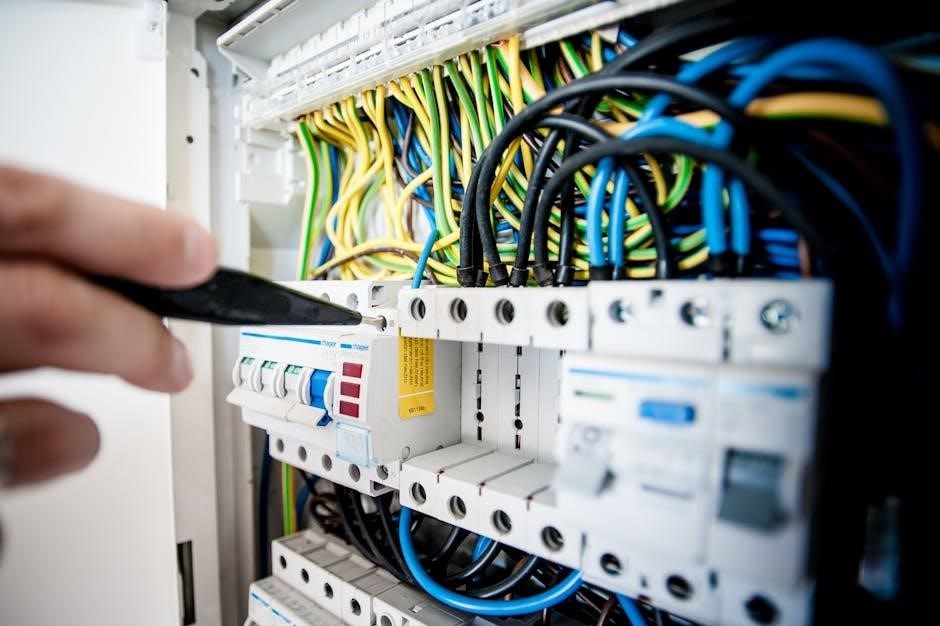
How to Download Mitsubishi Triton Wiring Diagram PDF
Download Mitsubishi Triton wiring diagrams from trusted sources like official Mitsubishi manuals or reputable websites. Ensure the PDF is specific to your model year, such as 2015-2018, and verify its authenticity before use. These diagrams are often provided as supplementary materials to the vehicle’s electrical manual, offering detailed circuit layouts and connection information. Always cross-check the source to avoid counterfeit or incomplete documents, as accurate wiring information is critical for safe and effective electrical system work.
3.1 Reliable Sources for Mitsubishi Triton Wiring Diagrams
Reliable sources for Mitsubishi Triton wiring diagrams include official Mitsubishi manuals, authorized dealerships, and trusted automotive forums. Websites like mmc-manuals.ru and Mitsubishi Motors Corporation provide authentic PDF downloads. For specific models, such as the 2015-2018 L200 MQ, official service manuals are available. Free downloads are accessible through platforms offering supplementary materials to the vehicle’s electrical systems. Ensure the source is verified to avoid counterfeit or incomplete documents. Trusted communities and forums also share validated wiring diagrams for various Triton models, ensuring accuracy and relevance for DIY projects and repairs. Always prioritize official or community-vetted sources for safety and reliability.
3.2 Step-by-Step Guide to Downloading the PDF
To download a Mitsubishi Triton wiring diagram PDF, start by visiting a reliable source like Mitsubishi’s official website or trusted platforms such as mmc-manuals.ru. Navigate to the section for your specific Triton model year, such as the 2015-2018 L200 MQ. Use the search function to locate the wiring diagram PDF. Click on the download link, ensuring the file is in PDF format. Verify the file size and name to confirm it matches your vehicle’s specifications. Once downloaded, save the file to a secure location for easy access. Some sources may require registration or verification to access the download. Always ensure the source is reputable to avoid downloading incomplete or incorrect diagrams.
3.3 Verifying the Authenticity of the Wiring Diagram
Verifying the authenticity of a Mitsubishi Triton wiring diagram is crucial for accuracy. Check the document for official Mitsubishi Motors Corporation branding and formatting. Ensure the PDF includes specific details like model year, engine type (e.g., 4D56/4M41), and relevant sections such as engine ECU wiring. Cross-reference the content with official manuals or Mitsubishi’s website. Look for consistent terminology and proper technical notation. Be cautious of diagrams with blurry text or missing sections, as they may be unreliable. Trusted sources like mmc-manuals.ru or official Mitsubishi portals are recommended to ensure the diagram aligns with your vehicle’s specifications.

Key Components of Mitsubishi Triton Wiring Diagrams
Mitsubishi Triton wiring diagrams include detailed layouts of the engine control unit (ECU), sensors, relays, and connectors. They specify circuits for systems like the 4D56/4M41 engines.
4.1 Overview of Electrical Systems in Mitsubishi Triton
The Mitsubishi Triton’s electrical systems are complex, integrating various components like the Engine Control Unit (ECU), sensors, and wiring harnesses. These systems manage functions such as engine performance, lighting, and electronic accessories. The ECU acts as the central controller, processing data from sensors to optimize operations. Wiring diagrams provide a visual representation of these connections, essential for understanding how components interact. The electrical setup is designed for reliability and efficiency, ensuring proper functionality under diverse driving conditions; By referencing the wiring diagrams, users can identify circuits for specific systems, aiding in diagnostics and repairs. This overview highlights the interconnected nature of the Triton’s electrical architecture, emphasizing the importance of accurate diagrams for maintenance and modifications.
4.2 Major Components Included in the Wiring Diagram
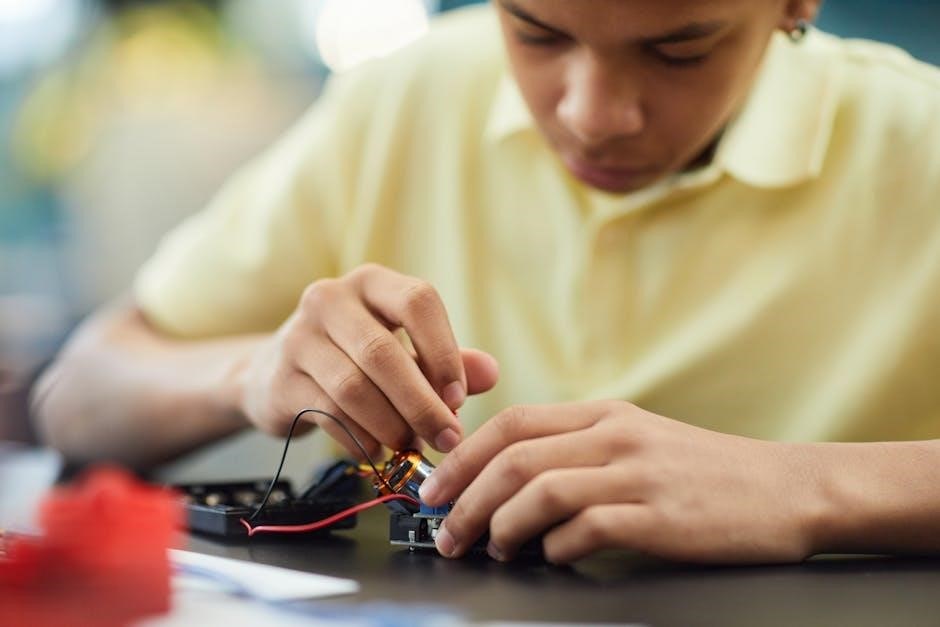
The Mitsubishi Triton wiring diagram includes detailed representations of key electrical components. These components encompass the Engine Control Unit (ECU), which regulates engine functions, and various sensors monitoring parameters like temperature and airflow. The wiring harness, a network of cables connecting components, is meticulously mapped. Connectors, fuses, and relays are also highlighted, ensuring their locations and roles are clear. Additionally, the diagram outlines the battery and charging system, essential for power distribution. Each component is labeled and linked, providing a comprehensive visual guide. This detailed breakdown allows users to trace circuits, identify connections, and understand how systems interact. The diagram’s clarity aids in diagnosing issues and planning modifications, making it an indispensable resource for both professionals and DIY enthusiasts.
4.3 Understanding the Engine Control Unit (ECU) Wiring
The Engine Control Unit (ECU) wiring in the Mitsubishi Triton is central to its electrical system. The ECU manages engine operations by processing data from sensors and controlling actuators. The wiring diagram details the ECU’s connectors, such as the engine ECU connector, which links to sensors for temperature, airflow, and crankshaft position. These connections ensure precise fuel injection and ignition timing. The diagram also illustrates the ECU’s communication with other systems, like the transmission and ABS, via CAN bus. Proper understanding of ECU wiring is crucial for troubleshooting issues like faulty sensor connections or incorrect data readings. This section helps users identify ECU-related circuits, enabling accurate diagnostics and repairs, and ensuring optimal engine performance. The wiring diagram’s clarity makes it easier to trace and verify ECU connections, essential for maintaining the vehicle’s efficiency and reliability. Additionally, it aids in identifying potential issues before they escalate, preventing costly repairs. By following the diagram, users can ensure all components are functioning as intended, maintaining the vehicle’s overall health. This comprehensive guide is invaluable for both professional mechanics and enthusiasts, providing a clear path to understanding and working with the ECU wiring.

Troubleshooting Common Electrical Issues
Common electrical issues in the Mitsubishi Triton include faulty sensors, blown fuses, and wiring malfunctions. The wiring diagram helps identify and isolate problems efficiently for quick resolution.
5.1 Identifying Faulty Wiring Using the Diagram
Using a Mitsubishi Triton wiring diagram, you can pinpoint faulty wiring by comparing the diagram to the actual electrical system. Start by locating the affected circuit and checking for blown fuses or tripped relays. Use a multimeter to test voltage and continuity in suspect wires. The diagram helps trace connections between components, such as sensors, ECUs, and actuators; Look for signs of damage, corrosion, or loose connections. Cross-referencing the diagram ensures accurate fault isolation, preventing unnecessary repairs. For complex issues, focus on harness connectors and ground points, as these are common failure areas. Always consult the official PDF wiring diagram for your specific Triton model to ensure accuracy.
5.2 Common Electrical Problems in Mitsubishi Triton
Common electrical issues in the Mitsubishi Triton include faulty sensors, corroded wiring connectors, and blown fuses. Corrosion in connectors, especially in coastal areas, can disrupt communication between components. The ECU may malfunction due to wiring faults, leading to engine performance problems. Another issue is intermittent dashboard lights caused by loose connections or damaged wiring harnesses. Overloaded circuits from aftermarket accessories can cause fuses to blow repeatedly. Environmental factors like moisture and temperature fluctuations often exacerbate these issues. Consulting the wiring diagram helps identify affected circuits and trace faults systematically. Regular inspection of wiring and connectors can prevent such problems, ensuring reliable electrical system operation.
5.3 How to Use the Wiring Diagram for Diagnostic Purposes
Using a Mitsubishi Triton wiring diagram for diagnostics involves identifying symptoms, locating related circuits, and tracing connections. Start by referencing the diagram to understand how components interact. If a feature like the headlights or wipers malfunctions, the diagram helps pinpoint the responsible circuit. Check for common issues like short circuits, open connections, or faulty fuses. Use a multimeter to verify voltage and continuity in suspect wires. Cross-referencing the diagram with error codes from the ECU can isolate problems further. By systematically tracing wires and verifying connections, you can identify and repair faults efficiently. This method ensures accurate troubleshooting and minimizes guesswork, saving time and reducing repair costs.
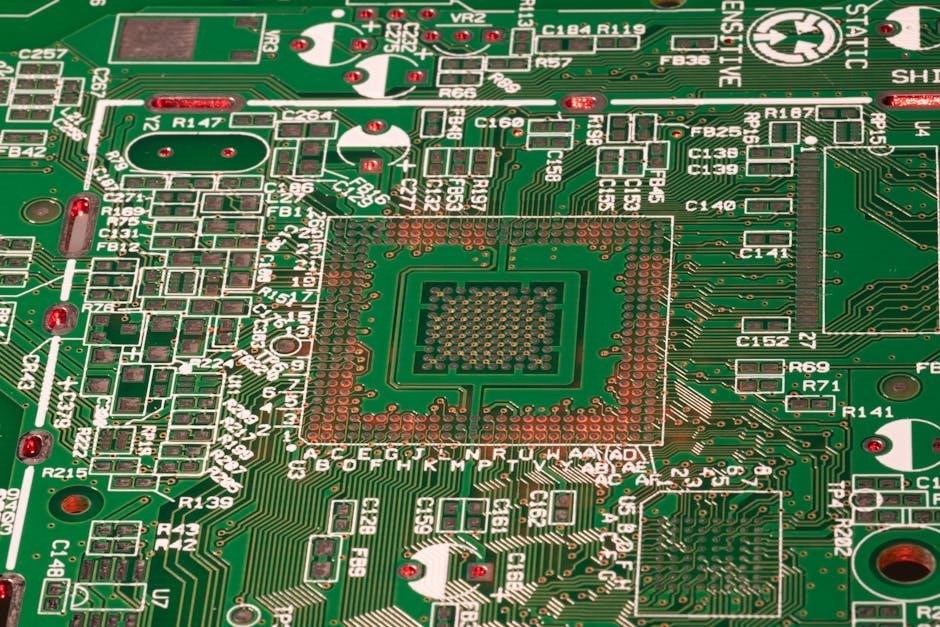
DIY Projects Using Mitsubishi Triton Wiring Diagrams
Mitsubishi Triton wiring diagrams enable enthusiasts to install aftermarket accessories, customize electrical systems, and upgrade components safely. They guide modifications, ensuring compatibility and functionality are maintained throughout the process.
6.1 Upgrading Electrical Systems with the Help of Wiring Diagrams
Mitsubishi Triton wiring diagrams are invaluable for upgrading electrical systems, enabling users to install advanced components like LED lighting, aftermarket stereos, or auxiliary power outlets. By providing a clear map of the vehicle’s electrical layout, these diagrams ensure compatibility and safety during modifications. They help identify the correct wires for power supply, grounding, and signal connections, reducing the risk of electrical damage or short circuits. Additionally, wiring diagrams guide the installation of modern accessories, such as USB chargers or dash cams, ensuring seamless integration with the existing system. This resource is essential for DIY enthusiasts aiming to enhance their Triton’s functionality without compromising its reliability or safety.
6.2 Installing Aftermarket Accessories Safely
When installing aftermarket accessories on your Mitsubishi Triton, a wiring diagram is crucial for safe and correct installation. It provides a detailed layout of the vehicle’s electrical system, helping you identify the right circuits and connections. This ensures that accessories like winches, spotlights, or roof racks are powered correctly without overloading the system. By following the diagram, you can avoid short circuits and electrical damage, ensuring the vehicle’s safety and reliability. Proper installation also maintains the warranty and prevents potential fire hazards, making the wiring diagram an essential tool for any modification. Always refer to the diagram to confirm compatibility and follow safety guidelines for a secure setup.
6.3 Customizing Your Mitsubishi Triton’s Electrical Setup
Customizing your Mitsubishi Triton’s electrical setup can enhance functionality and performance. A wiring diagram is indispensable for understanding the vehicle’s electrical layout, allowing you to safely integrate aftermarket components. Whether adding LED lights, a winch, or upgraded infotainment, the diagram guides you to the correct circuits and connectors. It helps avoid electrical conflicts and ensures compatibility with the vehicle’s systems. By referencing the wiring diagram, you can identify power sources, ground points, and signal wires, enabling precise modifications. This resource is vital for maintaining system integrity while personalizing your Triton to meet your needs. Always test modifications incrementally to ensure reliability and safety, and consult professional advice if unsure.

Best Practices for Working with Wiring Diagrams
Always use verified diagrams, follow safety protocols, and test connections gradually to avoid errors. Proper tools and a systematic approach ensure reliability and prevent electrical damage.
7.1 Essential Tools for Working with Electrical Systems
When working with Mitsubishi Triton wiring diagrams, essential tools include a multimeter for voltage and resistance testing, wire cutters, and connectors for secure joins. A circuit tester helps identify live wires, while a soldering iron ensures durable connections. Pliers and screwdrivers are vital for accessing and manipulating wiring components. A wiring harness repair kit is useful for damaged insulation, and a fuse puller simplifies testing electrical circuits. Proper tools prevent damage and ensure accurate diagnostics, making repairs safer and more efficient. Always use high-quality tools to maintain reliability and avoid potential electrical hazards. These tools are indispensable for effective troubleshooting and modifications, as outlined in the wiring diagram guides.
7;2 Safety Tips to Avoid Electrical Shock or Damage
When working with Mitsubishi Triton wiring diagrams, safety is paramount to prevent electrical shock or damage; Always disconnect the battery before starting repairs to eliminate power sources. Use insulated tools to avoid direct contact with live wires. Ensure the vehicle is on level ground and apply the parking brake. Never work near open flames or sparks, as electrical systems can release flammable gases. Wear protective gear, including gloves and safety glasses, to shield against electrical arcs. Avoid working in wet conditions, as moisture increases conductivity. Ground yourself properly to prevent static discharge. Follow the wiring diagram carefully to identify live circuits and avoid accidental short circuits. These precautions ensure a safe working environment and protect both the vehicle and the technician from potential hazards.
7.3 How to Label and Organize Wires for Future Reference
Labeling and organizing wires is crucial for maintaining clarity in your Mitsubishi Triton’s electrical system. Start by disconnecting the battery to ensure safety. Use a wiring diagram to identify each wire’s purpose and color-code them for consistency. Apply heat-shrink or adhesive labels to each wire, noting its function (e.g., “Headlight Power” or “Brake Sensor”). For complex systems, create a legend or chart to document the labels. Store this documentation alongside your wiring diagram for future reference. Consider bundling wires with zip ties or sleeves to keep them tidy. Regularly review and update labels after modifications. This practice prevents confusion, reduces repair time, and ensures long-term reliability of your vehicle’s electrical setup.

Resources and References
Official Mitsubishi manuals, online forums, and authorized dealers provide reliable resources for Mitsubishi Triton wiring diagrams. These sources ensure accurate and up-to-date electrical system information.
8.1 Official Mitsubishi Manuals and Guides
Official Mitsubishi manuals and guides are the most reliable sources for accurate wiring diagrams. Published by Mitsubishi Motors Corporation, these manuals provide detailed electrical system information, including circuit diagrams, connector locations, and ECU wiring specifics. They are available for various Mitsubishi Triton models, such as the L200 and MQ series, covering years from 1996 to 2018. These guides are often available in PDF format, making them easily accessible for download. They include comprehensive instructions for troubleshooting, repairs, and modifications, ensuring users can work safely and effectively. For DIY enthusiasts and professionals, these official resources are indispensable for maintaining and upgrading the Mitsubishi Triton’s electrical systems.
8.2 Online Communities and Forums for Support
Online communities and forums are invaluable resources for Mitsubishi Triton owners seeking support with wiring diagrams and electrical systems. Platforms like forums.mitsubishimotors.com and facebook.com/MitsubishiTritonOwnersGroup offer extensive discussions, shared PDF files, and expert advice. These communities are perfect for troubleshooting specific issues or gaining insights into complex modifications. Members often share their experiences, providing real-world solutions and tips for interpreting wiring diagrams. Additionally, specialized forums like 4x4community.com and mitsubishi-triton.net host detailed threads on electrical system maintenance and upgrades. Engaging with these groups can save time and ensure accurate repairs, making them essential for DIY enthusiasts and professionals alike. The collective knowledge available online complements official manuals, offering a well-rounded support system for Mitsubishi Triton owners.
8.3 Recommended Tools for Electrical System Maintenance
For effective electrical system maintenance on your Mitsubishi Triton, it’s essential to have the right tools. A digital multimeter is crucial for measuring voltage, current, and resistance, helping diagnose circuit issues. Circuit testers and LED test lights simplify identifying live wires and faulty connections. Wire strippers and crimping tools are necessary for repairing or replacing wires and connectors. A wiring harness repair kit ensures proper insulation and protection against environmental factors. Additionally, ECU scan tools are vital for troubleshooting advanced electrical systems. These tools can be found at automotive stores or online platforms like Amazon or eBay. Investing in quality tools ensures safe and accurate repairs, preventing further damage to your vehicle’s electrical system.
This guide provides a comprehensive overview of Mitsubishi Triton wiring diagrams, essential for safe and accurate electrical system repairs, modifications, and troubleshooting.
9.1 Summary of Key Points
This article provides a detailed guide to Mitsubishi Triton wiring diagrams, emphasizing their importance in electrical system maintenance, repairs, and modifications. It highlights the role of wiring diagrams in ensuring safety, accuracy, and efficiency when working with complex electrical circuits. The guide covers key topics such as troubleshooting common issues, DIY projects, and best practices for working with electrical systems. It also discusses reliable sources for downloading authentic wiring diagrams and the tools essential for electrical work. By following the outlined steps and tips, users can confidently navigate and customize their Mitsubishi Triton’s electrical setup. This comprehensive resource is designed to empower both professionals and DIY enthusiasts with the knowledge needed for successful electrical system management.
9.2 Final Tips for Working with Mitsubishi Triton Wiring Diagrams
When working with Mitsubishi Triton wiring diagrams, always start by identifying the specific system you’re addressing. Use reliable sources to ensure authenticity and relevance to your vehicle’s model year. Cross-reference diagrams with official manuals to confirm accuracy. Begin with simple tasks, such as tracing circuits, before tackling complex modifications. Label wires and components as you work to maintain clarity for future reference. Regularly update your knowledge of electrical systems and tools to stay efficient. Prioritize safety by disconnecting the battery before starting any electrical work. Finally, keep a well-organized workspace and consult online forums or professional resources if uncertainties arise. These practices will enhance your effectiveness and confidence in managing the Triton’s electrical systems.
